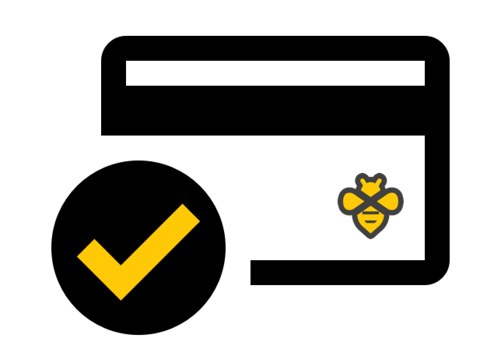
One of the main things we’re working on right now is making Beeminder more comprehensible to newbees. We’ve even hired a web designer, Josh Pitzalis, to help us with a big redesign. Writing blog posts explaining (sometimes obscure) things about Beeminder is very much not furthering that objective. But conveying them to you, readers of our excessively nerdy blog, is a good first step.
So today let’s see if we can convey the Things You Must Know before you give Beeminder your credit card, as well as all the reasons why it’s not nearly as scary as it sounds (even though it’s legitimately a little scary because that’s the point).
Beeminder can’t be a credible threat unless it has a way to automatically take your money. That’s the whole point. So we twist your arm pretty hard to add a credit card. Sure, you can create at least one goal and blissfully beemind indefinitely without ever adding one, but as soon as you first go off track, or even try to create additional goals, we insist that you make that sword of Damocles real.
Let’s dive in then. Here’s what it means to give Beeminder your credit card:
- You’re agreeing to get charged each time you go off track
- The pledge (amount you’re risking) increases each time, up to your pledge cap
- The goal never lets you off the hook till you explicitly tell it to
- There’s a one-week delay for any changes to a goal (including ending it)
- For manual Do Less goals, you have to explicitly enter zeros if you did nothing
Frightened yet? Allow us to mitigate your fear!
- We’ll never charge you if you keep all your datapoints on track
- We’ll email you before charging you in case anything went wrong (like any kind of technical problem or even just confusion about how things work)
- If you reply to that email we’ll always believe you and cancel the charge (unless you choose to weaselproof yourself)
- Deadman switch! If you stop using Beeminder altogether, we’ll (eventually) stop charging you
All crystal clear, right? That’s kind of a non-rhetorical question because if the answer is no then we have more work to do than we think to make all that obvious in the interface without giving the user walls of text to read!
Image credit: The Noun Project